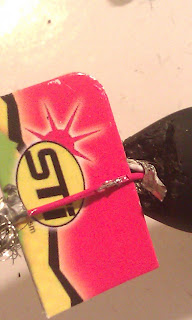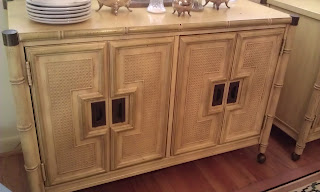The main issue was that the machine was not draining resulting in stagnant drainage water. So after emptying this water, the machine was hoisted about a foot and the remaining water in the drain hose was emptied as well into a bucket placed below the level of the bottom of the machine.
Then the machine was replaced on the floor and tilted back with the front end elevated to allow access to the pump on the front right bottom corner.
 |
| Inlet connection (horizontal) and outlet connection (vertical with black O ring) |
The bottom panel was partially removed providing exposure to the drain pump with both connection hoses. The hose that connects the tumbler to the pump via the inlet connection on the pump was removed with a bucket placed below to catch any residual water. In addition to water, this is what was in the bucket as well.
75 cents - Yup - three quarters fell out of the hose into the bucket. So here I am all happy that this must be the problem --- Solved !!!. So the entire machine was reassembled and a trial run was attempted without success. Surely, with thoughts in my mind, if the problem was 3 quarters, then why was the machine still not working after its removal? So I though for a minute, and decided to take down the pump itself completely. It was secured to the body of the machine with 4 screws, and therefore was easily removed.

What was found in the inlet connection was another quarter staring me in my face as if to say "Damn you found me". So I tried to remove it without success, and therefore was forced to open up the pump. This is what I found.
Mr. Quarter and his twin "Bob" (If you're a Trini you would get this) were both stuck in the inlet chamber of the pump and basically jammed
the rotating 3-finned blade preventing the pump from functioning at all. So round two - Surely, alas this has to be the problem. There weren't any coins in the outlet connection hose, so the hope was that with reassembly, everything should work just fine. ----->>>>>> AND IT DID!!!!!!
I was happy, the owner was happy, the referral person was happy, and I guess everybody who the owner told was happy also, I guess.
What was interesting from the online internet search about this problem was that one post said that the person who designed the washing machine should be fired and should loose his/her license because - they did not insert a pump filter to prevent large objects like coins or buttons from going into the pump and jamming it. Well this is precisely what happened in this particular case.
At the end of the day, it indeed was a learning experience, and I was glad to have the opportunity to scratch my fixit itch once again. :)
Peace out!!!!











































